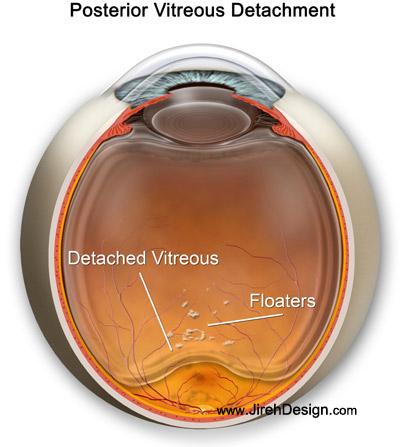Jetrea for vitreo-retinal adhesion
Jetrea is the first and only FDA-approved medicine for the treatment of Vitreomacular Adhesion. Jetrea is a newly approved intravitreal […]


Jetrea for vitreo-retinal adhesion
Jetrea is the first and only FDA-approved medicine for the treatment of Vitreomacular Adhesion. Jetrea is a newly approved intravitreal […]
Jetrea is the first and only FDA-approved medicine for the treatment of Vitreomacular Adhesion.
Jetrea is a newly approved intravitreal eye-injected drug to treat a common eye condition.

As the eye ages, it is normal for the vitreous to separate from the underlying retina. This is called Posterior Vitreous Detachment (PVD). If there are any adhesions between the vitreous and retina, the resulting “tug” on the retina as the vitreous pulls away may result in distorted or decreased vision. In rare cases, a macular hole may form. This condition is called Vitreomacular Traction Syndrome.
Watch a vitreous detachment animation
The standard of care for treating this condition is pars plana vitrectomy (PPV). This is a surgical procedure that involves removing the vitreous from the eye. It is a highly-successful and effective procedure for treating VMA.
In October of 2012, the FDA approved Ocriplasmin (Jetrea) pharmacological agent for the treatment of VMA. This approval made Jetrea the first and only FDA-approved treatment for VMA.
Jetrea works by dissolving the protein fibers that create the adhesion between the vitreous and the macula. Dissolving this connection safely completes the detachment of the vitreous from the macula and relieves the traction. The release of this traction eliminates the sight-robbing symptoms of VMT.
Jetrea is a non-invasive procedure, meaning it does not involve actual surgery in the eye. Instead, a small needle is inserted into the anesthetized eye and a small amount of the Ocriplasmin concentration is delivered into the vitreous. This procedure is called “intravitreal injection” and is used extensively in vitreo-retina eye care for drug delivery of the popular anti-VEGF medications, like Lucentis, Avastin, Macugen and Eylea.
Although uncommon, possible complications from Jetrea include vitreous floaters, bloodshot eye, eye pain, vision blurriness and distortion, macular hole and retinal swelling. In very rare cases, retinal detachment can occur.
Dr. Deupree began using the Jetrea treatment in his Clearwater, Florida retina clinic in March, 2013. He has performed thousands of intra-vitreal injections since 1990.
Although Jetrea is not always the best choice for some eyes, it offers a much-needed alternative to a common vitreo-retina condition.






